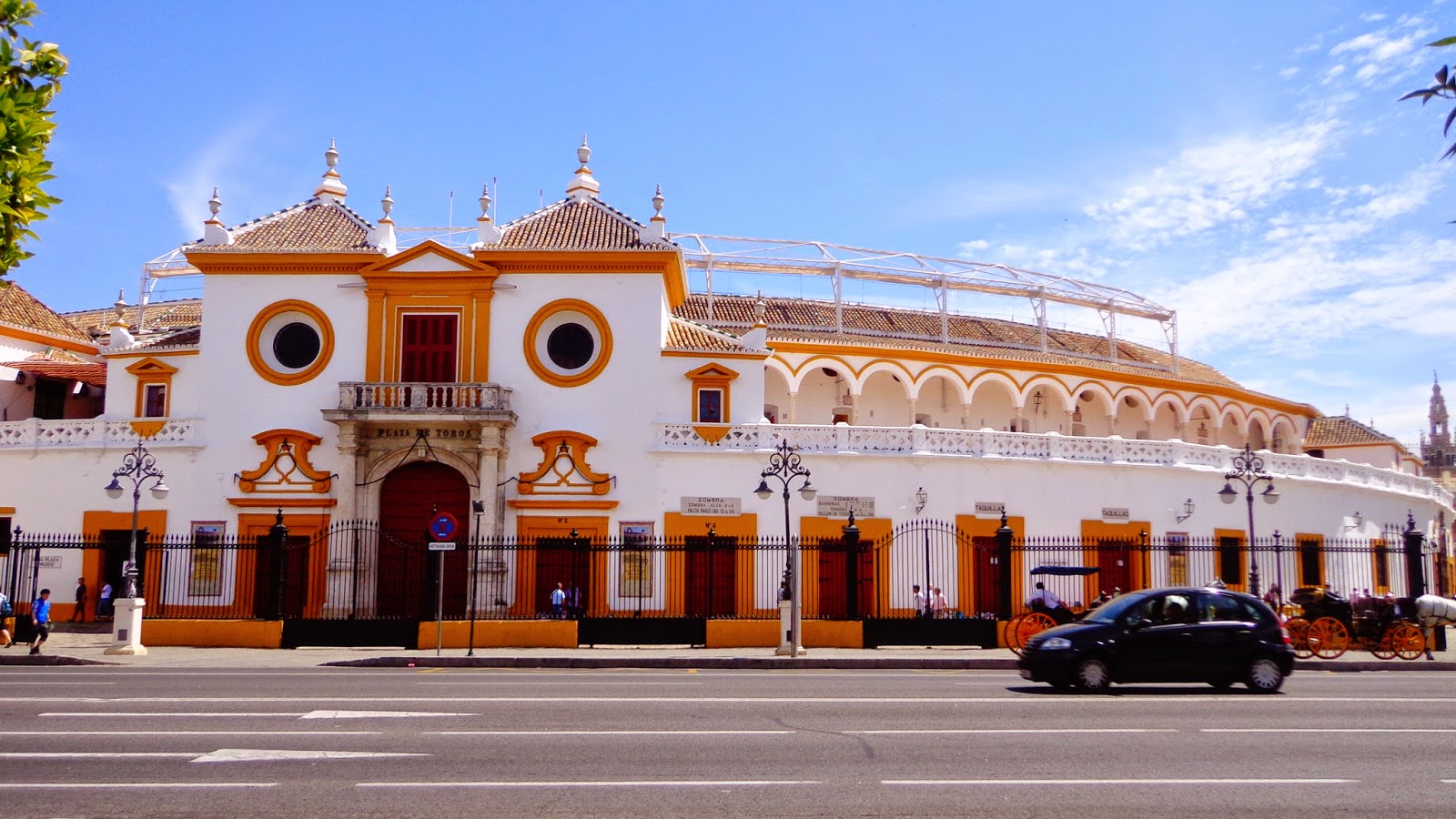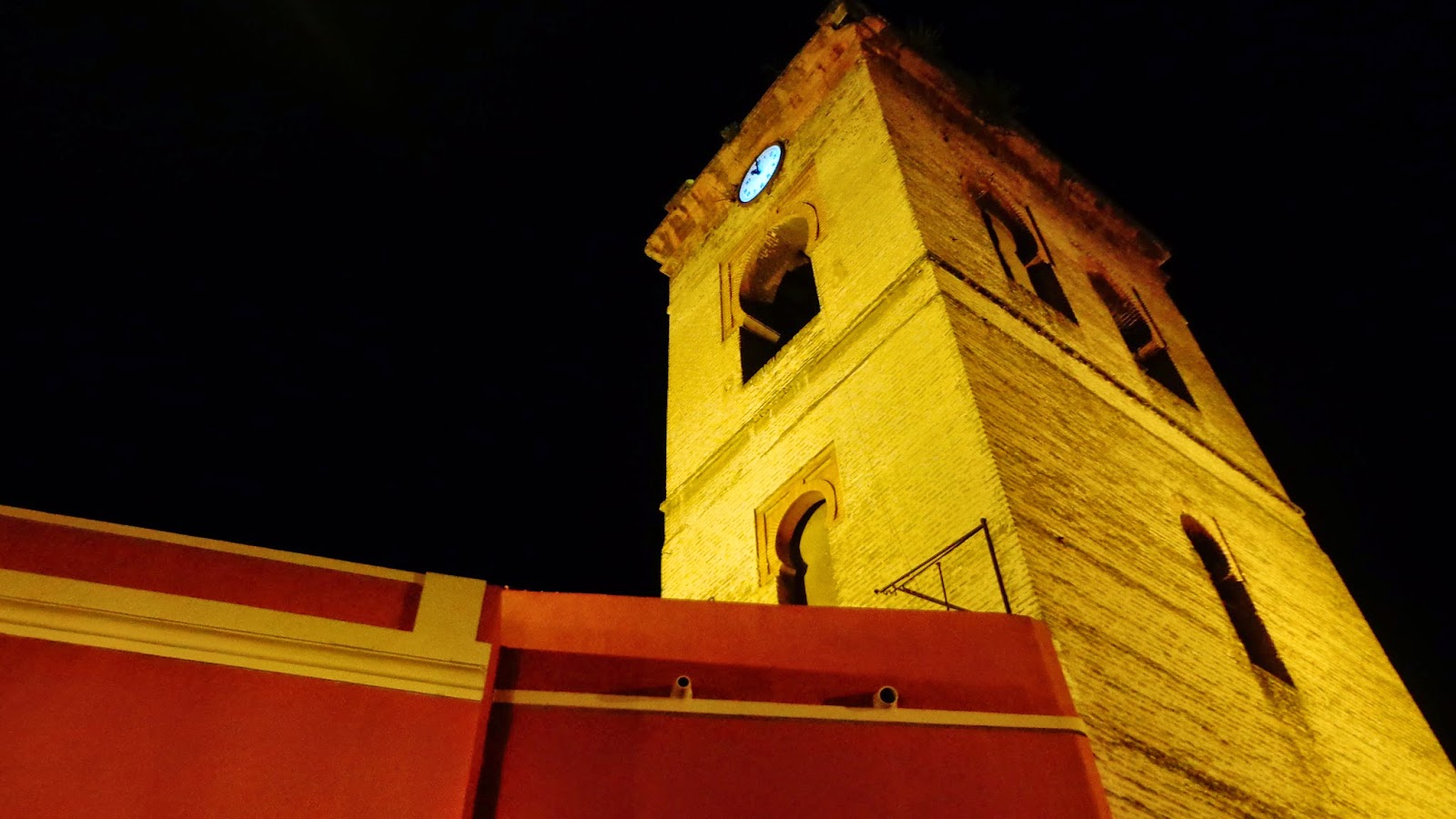The Spanish Travelogue chronicles my journey through the explored and unexplored regions of the Spanish mainland (and the unexplored corners of the explored regions).
The rest of the country takes its afternoon Siesta. Madrid doesn't even sleep at night. Madrid is the big city where you can lose yourself, amidst the wide roads, the huge buildings and the vast Madrid population busy losing itself amidst the wide roads, the huge buildings....
I will begin with a wikipedia-esque introduction. Madrid is the capital and largest city of Spain. And Madrid makes one feels its enormity through not just the wide roads or the palatial buildings; the enormity is in the spirit of the city. Madrid is the kind of city you will want to get lost in - amidst the hordes of people walking on the wide side-walks, passing through the bustling squares, past the shops selling knick-knacks, the art museums containing various visions and more. Madrid makes you feel as alive as it itself is.
Though geographically speaking, Madrid is a big city, all the attractions are situated quite close to each other. The easiest ways of commuting are by metro and by foot. It is advisable to take a day-pass for Zone 1, which makes you travel to all places there are to see in Madrid, except the football stadium. Get off at the convenient metro stations and walk on the boulevards of Madrid to reach your destination.
The most popular meeting point in Madrid is the Puerta del Sol. The place is always abuzz with people going somewhere, coming from somewhere, just standing, playing music, making love (up to a certain base), protesting for human rights, every kind of activity. Take the metro to Vodafone Sol, and walk up to the point where there's a statue of a bear hugging a tree. This.
The bear above is the starting point of the Gran Via. We shall come to this in a while. But for now, take the opposite direction and head towards the Palacio Real (or the Royal Palace). A view of the grandiose palace from outside should suffice, unless you're one of those tourists who think everything should be covered.
The Madrid Cathedral is adjacent to the Palace. Again, I would recommend that seeing the Cathedral from outside should do.
From the Palacio Real, walk on to the Temple of Debod. An ancient Egyptian temple, the Temple of Debod was dismantled and rebuilt in Madrid. I would recommend visiting the Temple at sunset for breathtaking views of the Palacio Real and the city.
Walk back to the Gran Via. If you are tired after all the walking (your author is always tired and hungry), take a small detour to visit the Plaza Mayor. As you sit at a cafeteria inside Madrid's central plaza to have your tapa and coffee (or your choice of drink), look around you. What seems today to be just an imposing square surrounded by residential buildings and teeming with cafeterias, used to be at one point of time a famous centre for bullfights and public executions.
The Plaza has another interesting story about it. The statue inside the Plaza is that of King Philip the Third, mounted on a horse. The citizens of Madrid had once thought of building an underground parking lot, and thought it fit to temporarily remove the statue. Upon doing so, they discovered that the statue was hollow and was filled with dead sparrows, which had entered through the mouth of the horse and could not find their way out again. The citizens then thought it appropriate to seal the mouth of the horse so that no more sparrows would be trapped inside the King.
If you are still hungry (despite reading about these stories), walk a little from the Plaza to Sobrino de Botín, the oldest functional restaurant in the world. In fact, I'd say even if you aren't that hungry, do a bit of a pilgrimage by walking across to the restaurant established in 1725, where even Francisco de Goya worked as a waiter! (Okay this was BEFORE he was inducted into the Royal Academy of Fine Arts). And don't let Mr. Woody Allen convince you that you only come across Ernest Hemingway and Scott Fitzgerald in the Parisian midnights of the '20s; both of them have spent many an evening here, in Sobrino de Botín. (Hemingway preferred to be referred to as 'Ernesto' in Spain. Just by-the-way-trivia).
Now that the hunger is quenched, let us digest it by walking across to the Gran Via. Which reminds me. My suggestions to readers wanting to travel to European cities is, Always try to take a walking tour. That suggestion continues.
Moving on, once you reach Sol and find the bear, walk on towards the Gran Via. Gran Via in Español means, "Grand View". True to its name, The Gran Via is the broadway of Madrid. The convergence of many streets lends it a grand view, and you should just take the evening stroll on this road to see the colours of Madrid come alive. The Gran Via is the go-to place for nightclubs, fine dining and shopping, if you have the money to splurge. Though I won't expound on this much, the debauchery dens are located close by, if you stick on till late. Go figure that bit out yourself.
If you are walking along the Gran Via during the day, walk on till you reach the Plaza de Cibeles. Go inside, take the elevator, reach the top, admire the view of the square, take a photograph. Descend. There's nothing else to see there.
We next go to the Puerta de Alcalá. Located in the Plaza de la Independencia, or the Independence Square, the monument is a pleasant place to stand and stare, or be clicked.
A couple of minutes away from the Puerta de Alcalá is the Retiro Park. Initially belonging to the Monarchy, the park is now open to the public. The park is surrounded by monuments and sculptures built in the Gothic style, that surround the lake in the centre. I would recommend lunch at the eateries here. Thin-crust pizza and Sangria.
Needless to say, Madrid has a bustling night life. The most popular night club here is the Kapital. Get off at Atocha station and walk on till you see Madrid's young population clustered around the seven-storey club. Make sure you find out about the dress code. If you find Kapital expensive (which it is, especially on Friday nights), you might hit the Velvet Disco, which has really amazing music, and a great crowd.
I had kept the topic of museums for the end. Simply because museums are a matter of personal choice, and how much of time you would devote to visiting them depends on how much of a sucker for art you are. If so, then visit the museums in Madrid, and (firstly) read on.
Madrid is the art capital of the world. Of the twenty-odd museums, which you won't have time to visit unless you are staying in Madrid for a long duration, you must at least visit the Golden Triangle of Art - The Prado, Museo Reina Sofia and Thyssen-Bornemisza. I would suggest you visit in the aforesaid order of priority.
The sheer number of rooms containing paintings segregated according to time periods and countries makes it impossible to cover Museo del Prado in a day. Which is why it is advisable to spread your Prado visit over two or more days. Entry to the museum is free from 6-8 p.m. on Tuesdays to Saturdays. Reach the museum well in advance in order to avoid a huge line in front of you. If you are running short of time, make sure you don't miss out on the works of Velázquez, El Greco, Titian and Rubens. A personal favourite was the room displaying Venetian paintings during the 16th century.
The Museo Reina Sofia has a bigger name, but that's not important. What is important is that you do not miss the surrealist paintings. The connection demonstrated between the works of Dalí and Buñuel is a must-see, and so are the works of Picasso, Juan Miró, Juan Gris, Pablo Gargallo and Julio González. I didn't understand abstract expressionism and Neo-Dada though.
 |
| The painting above is that of a Musician's Room. One of the best depictions I have seen. |
A baron and his wife were curators of art, and courtesy their cultivation of the interest, the Thyssen-Bornemisza now houses some of the rarest paintings and art works from across centuries and cultures. Thyssen is the third on the priority list of museums, but the art lover would just find it so much worth spending time roaming around the various rooms of the museum. Madrid is perhaps as much beautiful from within as it is from without.
Post Script:
It was my last day in Madrid (and also in Spain). I had gone to the Plaza Mayor for dinner after a day of Prado and Thyssen, and was sitting at one of the cafeterias. The server, Luis, overheard me speaking in Bengali with my friend and started chatting up. He even tried to greet me "Nomoshkaar" in Bengali, which got me curious. Luis then told me that his elder brother takes a road trip from Spain to India every year, to conduct business! I had ordered a vodka, and Luis kept pouring till it seemed to me that he'd poured about four pegs of Absolut Vodka. I mildly protested saying I will far overshoot my budget with this, to which he said, "You only pay for the one drink you'd ordered; I always pour a little extra." Luis winked, smiled and went away.


























